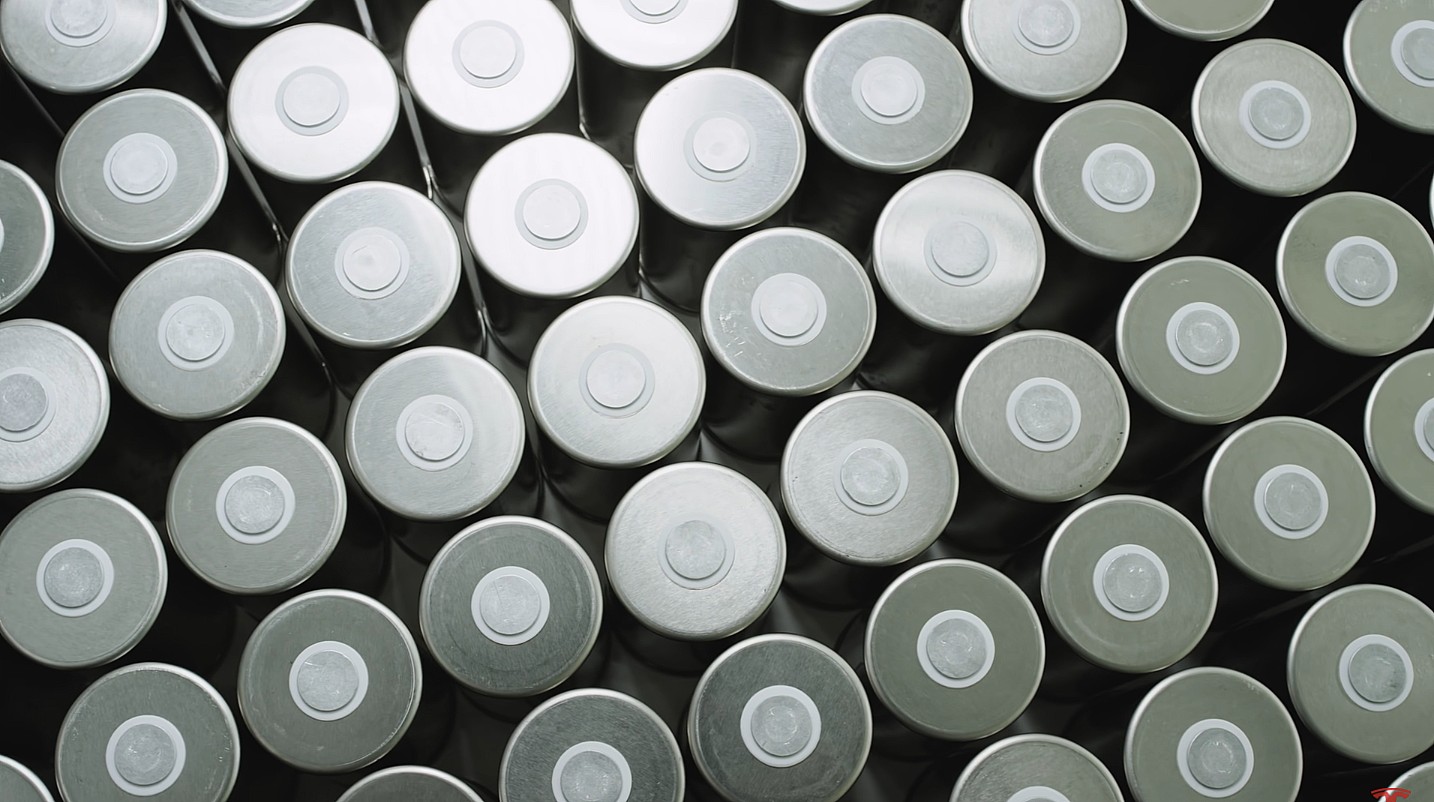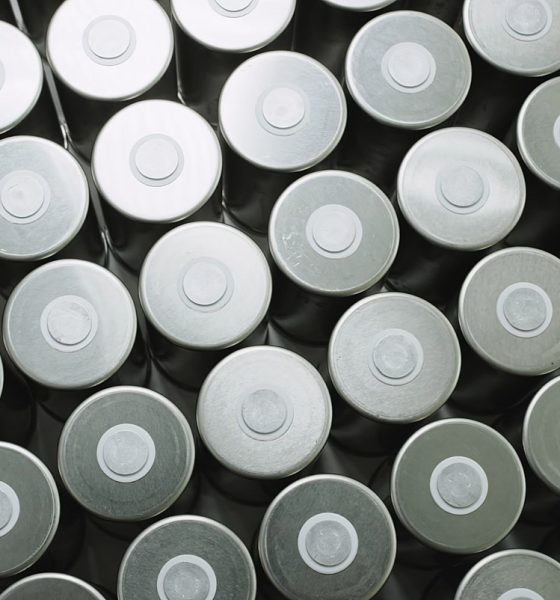Former Tesla co-founder JB Straubel’s battery recycling startup Redwood Materials announced recently that it had come to terms with Envision AESC for cell recycling efforts. After CNBC initially reported the partnership yesterday, Teslarati spoke to the battery recycling startup, indicating there are plenty of details that make the pairing ideal for the entire EV sector.
While Redwood’s most recent announcement sheds light on a partnership with AESC, it is not the only contributor to the batter recycling efforts that Straubel’s company is working on. With the conglomerate’s announcement, Redwood now works with the two largest battery manufacturing companies in North America. Along with AESC, Redwood is also working with Panasonic, Tesla’s supplier at its factory in Sparks, Nevada, known as the Tesla Gigafactory. While Envision AESC works out of Tennessee, Redwood has established two battery cell producers in separate regions of the United States, working on expanding its footprint of possible EV manufacturers who need assistance in responsibly disposing of their batteries.
Resuing battery materials will eliminate some criticism regarding mining, which can be hazardous to the environment. Ultimately, Redwood aims to give EV manufacturers the ability to reuse their materials, and it has gotten to the point that the difference between new and recycled materials is relatively “indistinguishable,” Straubel said.
However, Bill Williams, Envision AESC’s Director of Business Development, also chimed in on the partnership with Redwood. The two companies’ goals of sustainability and cost-effectiveness will help the development of the electric vehicle sector, along with the ongoing production of energy storage products that are becoming more popular.
Williams said:
“Envision AESC’s partnership with Redwood Materials will allow all production scrap from our US factory to be recycled, and, eventually, for Redwood to supply material for AESC. This circular supply chain supports Envision AESC’s deep commitment to sustainability and already creates substantial cost savings for Envision AESC that will be passed down to future electric vehicles and energy products.”
ALSO READ:
Two Tesla Execs linked to advanced recycling startup Redwood Materials
Batteries from AESC’s facility in Smyrna, Tennessee, are being used to power electric buses, energy storage units, and the Nissan LEAF, among many other products, a Redwood spokesperson told Teslarati. Additionally, the material being received by Redwood from both the Tesla Gigafactory makes up for more than 1 GWh of material from Panasonic alone. This is ultimately fueled by the expansion of the Gigafactory, and the material received by Redwood will return to Panasonic and be put into new batteries, according to Redwood’s spokesperson.
Redwood will recycle all production scrap from any of its partners, including cathode and anode materials and cells or battery modules that don’t pass validation and are past the point of repair. The goal of its partnership with AESC is to produce material that could eventually be returned to the supplier as a part of a fully circular supply chain, eliminating the need for massive mining pushes or extensive contracts with battery material suppliers, the spokesperson added.
Redwood’s development of recycled goods will eventually turn the EV sector into an even more sustainable industry that could lead to the complete phase-out of combustion engines altogether. If batteries are sourced properly as the EV sector continues to grow, many of the cars on the road could contain recycled materials thanks to Redwood’s initiative, turning the already Earth-friendly EV sector into one of the most sustainable industries globally.

News
Tesla FSD fleet is nearing 7 billion total miles, including 2.5 billion city miles
As can be seen on Tesla’s official FSD webpage, vehicles equipped with the system have now navigated over 6.99 billion miles.

Tesla’s Full Self-Driving (Supervised) fleet is closing in on almost 7 billion total miles driven, as per data posted by the company on its official FSD webpage.
These figures hint at the massive scale of data fueling Tesla’s rapid FSD improvements, which have been quite notable as of late.
FSD mileage milestones
As can be seen on Tesla’s official FSD webpage, vehicles equipped with the system have now navigated over 6.99 billion miles. Tesla owner and avid FSD tester Whole Mars Catalog also shared a screenshot indicating that from the nearly 7 billion miles traveled by the FSD fleet, more than 2.5 billion miles were driven inside cities.
City miles are particularly valuable for complex urban scenarios like unprotected turns, pedestrian interactions, and traffic lights. This is also the difference-maker for FSD, as only complex solutions, such as Waymo’s self-driving taxis, operate similarly on inner-city streets. And even then, incidents such as the San Francisco blackouts have proven challenging for sensor-rich vehicles like Waymos.
Tesla’s data edge
Tesla has a number of advantages in the autonomous vehicle sector, one of which is the size of its fleet and the number of vehicles training FSD on real-world roads. Tesla’s nearly 7 billion FSD miles then allow the company to roll out updates that make its vehicles behave like they are being driven by experienced drivers, even if they are operating on their own.
So notable are Tesla’s improvements to FSD that NVIDIA Director of Robotics Jim Fan, after experiencing FSD v14, noted that the system is the first AI that passes what he described as a “Physical Turing Test.”
“Despite knowing exactly how robot learning works, I still find it magical watching the steering wheel turn by itself. First it feels surreal, next it becomes routine. Then, like the smartphone, taking it away actively hurts. This is how humanity gets rewired and glued to god-like technologies,” Fan wrote in a post on X.
News
Tesla starts showing how FSD will change lives in Europe
Local officials tested the system on narrow country roads and were impressed by FSD’s smooth, human-like driving, with some calling the service a game-changer for everyday life in areas that are far from urban centers.

Tesla has launched Europe’s first public shuttle service using Full Self-Driving (Supervised) in the rural Eifelkreis Bitburg-Prüm region of Germany, demonstrating how the technology can restore independence and mobility for people who struggle with limited transport options.
Local officials tested the system on narrow country roads and were impressed by FSD’s smooth, human-like driving, with some calling the service a game-changer for everyday life in areas that are far from urban centers.
Officials see real impact on rural residents
Arzfeld Mayor Johannes Kuhl and District Administrator Andreas Kruppert personally tested the Tesla shuttle service. This allowed them to see just how well FSD navigated winding lanes and rural roads confidently. Kruppert said, “Autonomous driving sounds like science fiction to many, but we simply see here that it works totally well in rural regions too.” Kuhl, for his part, also noted that FSD “feels like a very experienced driver.”
The pilot complements the area’s “Citizen Bus” program, which provides on-demand rides for elderly residents who can no longer drive themselves. Tesla Europe shared a video of a demonstration of the service, highlighting how FSD gives people their freedom back, even in places where public transport is not as prevalent.
What the Ministry for Economic Affairs and Transport says
Rhineland-Palatinate’s Minister Daniela Schmitt supported the project, praising the collaboration that made this “first of its kind in Europe” possible. As per the ministry, the rural rollout for the service shows FSD’s potential beyond major cities, and it delivers tangible benefits like grocery runs, doctor visits, and social connections for isolated residents.
“Reliable and flexible mobility is especially vital in rural areas. With the launch of a shuttle service using self-driving vehicles (FSD supervised) by Tesla in the Eifelkreis Bitburg-Prüm, an innovative pilot project is now getting underway that complements local community bus services. It is the first project of its kind in Europe.
“The result is a real gain for rural mobility: greater accessibility, more flexibility and tangible benefits for everyday life. A strong signal for innovation, cooperation and future-oriented mobility beyond urban centers,” the ministry wrote in a LinkedIn post.
News
Tesla China quietly posts Robotaxi-related job listing
Tesla China is currently seeking a Low Voltage Electrical Engineer to work on circuit board design for the company’s autonomous vehicles.

Tesla has posted a new job listing in Shanghai explicitly tied to its Robotaxi program, fueling speculation that the company is preparing to launch its dedicated autonomous ride-hailing service in China.
As noted in the listing, Tesla China is currently seeking a Low Voltage Electrical Engineer to work on circuit board design for the company’s autonomous vehicles.
Robotaxi-specific role
The listing, which was shared on social media platform X by industry watcher @tslaming, suggested that Tesla China is looking to fill the role urgently. The job listing itself specifically mentions that the person hired for the role will be working on the Low Voltage Hardware team, which would design the circuit boards that would serve as the nervous system of the Robotaxi.
Key tasks for the role, as indicated in the job listing, include collaboration with PCB layout, firmware, mechanical, program management, and validation teams, among other responsibilities. The role is based in Shanghai.
China Robotaxi launch
China represents a massive potential market for robotaxis, with its dense urban centers and supportive policies in select cities. Tesla has limited permission to roll out FSD in the country, though despite this, its vehicles have been hailed as among the best in the market when it comes to autonomous features. So far, at least, it appears that China supports Tesla’s FSD and Robotaxi rollout.
This was hinted at in November, when Tesla brought the Cybercab to the 8th China International Import Expo (CIIE) in Shanghai, marking the first time that the autonomous two-seater was brought to the Asia-Pacific region. The vehicle, despite not having a release date in China, received a significant amount of interest among the event’s attendees.










